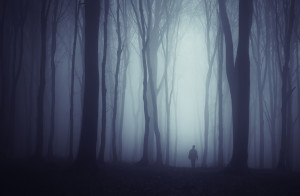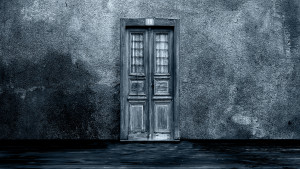Guest Post by Annik Valkanberg
Starting in the late 1970’s, if you mentioned the word horror, people assumed you meant cheerleaders getting chopped up into kibbles by either a paranormal creature or a psychopath with an inordinate amount of hit points.
In fact, people were so used to Jason and Freddy that the reading public started to push back on the genre. Things got so bad that authors and publishers did strange things to say that their horror books were not horror…they were…ummm…thrillers! or suspense! Anything but the dreaded “H” word. Even retailers like Barnes and Noble, who once had several shelves labeled “Horror” which mostly meant “Stephen King, Clive Barker, Peter Straub, and a couple of others we accidentally picked up from the distributor”, began to pull those labels and switch it to Thriller! or Suspense! or even Cookbooks!
Those slasher movies were incredibly cheap to make, exploited partially-clad young women who would scream loudly when they met the antagonist, and made a boat-load of money in the theaters. The books weren’t as successful, which bled over into the other sub-genres of the horror market. Ghost stories, paranormal creatures who fell in love, apocalyptic zombie-fests were all tarred and feathered during the mid 80’s into the 90’s. The horror market collapsed, and the authors and publishers began to either publish titles under established categories like “thriller” or created new ones, such as “paranormal romance”. The latter didn’t even exist in the 1980’s, and now bookstores have whole sections dedicated to books such as Twilight. Amazon shows 18,834 ebooks in the Kindle Paranormal Romance category. It’s a huge market, and the romance crossover is bringing in people who didn’t read anything else but straight romance for years.
There are folks who do enjoy the slasher bloodfests, and whole sub-genres grew out of the grave of horror. Pioneers like John Skipp helped to create an even bloodier version of the slasher novel, and the Splatterpunk niche was born. Some authors combined some horror elements with bizarre, LSD flashback inspired bits and the Bizarro niche burst onto the scene. Carlton Mellick III’s novel The Haunted Vagina is an example which will make you wonder if the world isn’t ending tomorrow because now you’ve seen everything.
It’s been a couple of decades since the word “horror” was the proverbial kiss of death for a book. Self-published authors are poking their heads out of the shadows and using the word on their book covers. With the general acceptance of all of the new niches, especially paranormal romance, the publishing industry is including that word in the book descriptions and on dust jackets once again. It is important, however to always be vigilent about the book market. If something like the Great Horror Death ever happens again, you need to be aware of how the industry is reacting. It’s better to re-classify your book before the Big 5’s creaky machine gets around to it. Authors and small publishers need to keep on their toes, and that means reading what’s new and trending in the industry at least several times a week.
To risk getting caught twisting in the winds of market share just fills one with a sense of horror.



